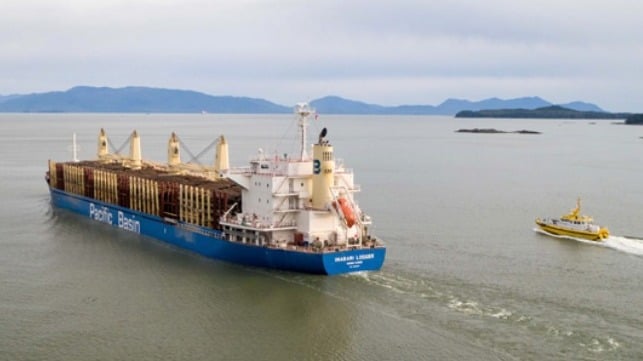Shipowners Take Steps to Avoid U.S. and Chinese Port Fees

Shipowners are starting to reveal some of the steps that are being taken to avoid the port fees instituted by the U.S. and China this week, targeting ships built, owned, or operated by companies in the respective countries. The steps come as the industry also flagged the uncertainties in the programs and continues to seek guidance from the respective authorities on how elements, especially ownership, will be interpreted.
There had been reports that some of the large companies were considering structural changes to their corporations or their fleets, while many of the carriers were reported to be redeploying ships across routes. While the issue of where a vessel was built is definitive, how a ship is owned and managed is less specific, and now owners appear to be moving to take advantage of some of the opportunities.
Pacific Basin Shipping, which with 246 ships, is one of the largest operators in the dry bulk fleet, detailed a series of proactive steps in its areas of control that it is taking to mitigate its exposure. It starts with expanding its Singapore company and moving strategic leadership to Singapore from the company’s traditional headquarters in Hong Kong. It notes that it used the retirement of a board member and appointment of a new board member to also mitigate the applicability of the USTR 301 Annex I about Chinese ownership and control.
The company reports it has already transferred several of its 107 owned vessels to the Singapore registry under a plan to move about half its ships to that flag. Further, it says going forward, only ships owned or chartered through its operations in Singapore will be deployed on voyages calling at U.S. ports.
Commenting on market conditions in the dry bulk sector, it notes a rally and says the sector is “firm.” However, it expects the tariffs will add to existing disruption and ultimately contribute to higher freight rates and volatility. It believes that some market participants have “started self-sanctioning,” meaning that some owners are keeping ships outside the U.S., and some charters are preferring non-Chinese vessels.
Pacific Basin says it has also sought further clarity from the USTR on the 25 percent ownership rule. It notes that as a public company, its shares are held broadly, and while it does not have a controlling shareholder, it cannot know the nationality of each shareholder.
This issue is emerging as a broader uncertainty for the publicly traded companies. Global Ship Lease, a Greece-based owner and lessor of containerships, issued a similar statement on October 15. It declares that it is not “owned, operated, or controlled by any U.S. enterprise,” while highlighting that it received limited information on its individual shareholders, most of whom hold their shares via brokers or managers. Public companies only have details on major shareholders and institutional investment managers. Global Ship declares that it does not believe it has 25 percent or more direct or indirect ownership in the U.S. and that its company is located in Greece, and is owned and controlled by Greek citizens.
Other owners are also believed to be taking steps to mitigate their exposures to the fees, either in the U.S. or China. Seaspan, which with 241 containerships calls itself the largest independent owner and lessor, has quietly been restructuring. Media reports last month suggested the company would be moving over 100 vessels into the Singapore registry, and a review of the databases shows Seaspan now has over 130 ships registered and managed from Singapore. It still has over 70 ships flagged in Hong Kong, according to the databases. It has not publicly commented, but the reports said it would also establish a headquarters in Singapore.
While much of the attention has been on how the new reciprocal programs impact commercial shipping, it appears the cruise sector is also concerned. China's Caixin news outlet is reporting that the premium cruise ship Riviera operated by Norwegian Cruise Line Holdings' Oceania Cruises also diverted today. The ship which carriers 1,250 passengers was on a Pacific crossing trip and due to stop today in Shanghai. Caixin reports the ship built in Italy but operated by a company based in the United States was likely to have encountered a $1.64 million additional fee for docking in China.The Riviera, like two Maersk Line containerships, has elected to divert to Busan, South Korea instead of paying the additional port fee under China's retaliatory program.
